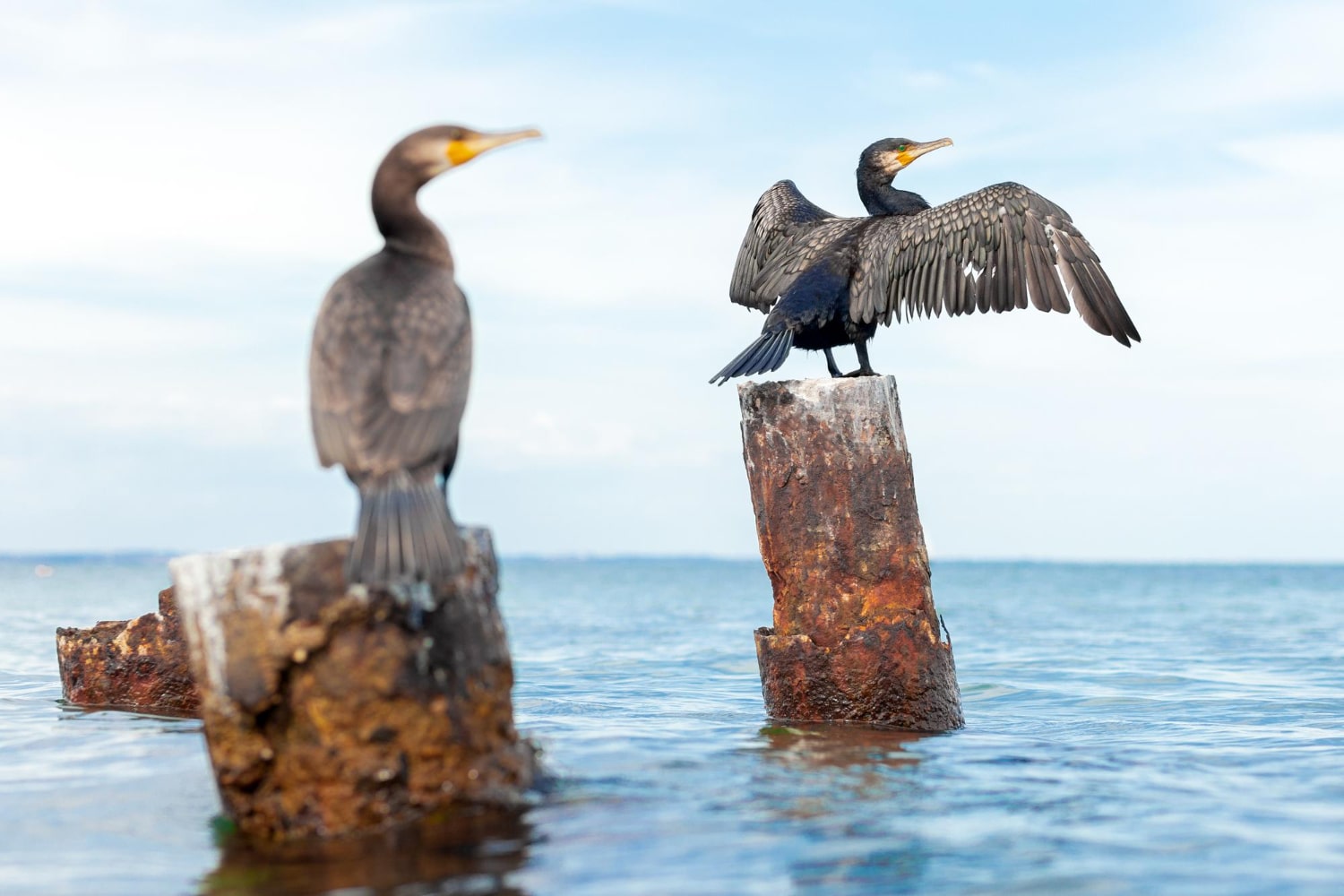Cormorants are aquatic birds that have long attracted the attention of researchers and nature enthusiasts with their unusual appearance and behavior. They can be found on all continents except Antarctica, and their presence plays an important role in the functioning of coastal ecosystems. Known for their exceptional hunting skills, they possess unique physiological and behavioral traits that make them some of the most fascinating birds in the world. They often appear in legends, literature, and traditional fishing practices. Below are captivating facts you might not know.
- Cormorants belong to the cormorant family, with more than 40 species distributed across different parts of the world. Each species has its own distinctive characteristics in appearance, size, and behavior. All, however, are perfectly adapted to living near bodies of water.
- The body of a cormorant is slender, and its neck is long, allowing it to dive swiftly underwater. Their legs are positioned toward the back of the body, making them excellent swimmers, although they move more slowly and less gracefully on land. This body structure is the result of evolutionary adaptation to underwater hunting.
- Unlike many aquatic birds, cormorants do not have fully waterproof plumage. This allows their bodies to remain less buoyant, making diving easier. After hunting, they often spread their wings in the sun to dry their feathers.
- The cormorant’s diet is primarily made up of fish, but they can also hunt crustaceans and mollusks. While hunting, they can dive to depths of 6–7 meters and remain underwater for up to a minute. Their excellent vision allows them to spot prey even in murky water.
- In some parts of Asia, cormorants have been used by humans for fishing. The birds were trained to dive for fish, with a ring placed around their necks to prevent them from swallowing large catches. This tradition in China and Japan has survived as part of cultural heritage and is now mostly practiced for tourism.
- Cormorant nests are built on rocks, trees, or among reeds. These birds often nest in colonies containing hundreds of pairs. They construct their nests from twigs, grasses, and other materials found nearby.
- The incubation period lasts about a month, with both parents participating. Chicks hatch naked and helpless, requiring constant care. Only after several weeks do they grow feathers and begin making their first attempts at swimming.
- Cormorants are not known for melodious singing but produce hoarse and guttural sounds. These calls are most often heard during the breeding season or when defending a nest. Gestures such as wing-spreading or head-raising also play an important role in communication.
- Their plumage is usually black or dark brown, often with a metallic sheen. In some species, light patches appear on the head or face during the breeding season, disappearing afterward. This change helps attract a mate.
- Cormorants adapt well to various environments. They can be found on sea coasts as well as near inland lakes and rivers. Some species even settle in cities, nesting on rooftops.
- Despite their hunting skills, cormorants are sometimes viewed as competitors by fishermen, leading to conflicts. In some regions, population control measures are introduced to protect fish stocks.
- While foraging, cormorants can travel long distances but usually do not venture more than several dozen kilometers from their breeding colony. They fly straight and fast, often flapping their wings continuously.
- The cormorant’s beak ends with a hook, allowing it to grip slippery prey securely. Strong neck muscles help them swallow even larger fish quickly.
- Some species are endangered due to habitat loss and water pollution. Conservation programs aim to protect breeding areas and monitor populations.
- In the wild, cormorants can live up to 20 years, although predators and human activity often shorten this lifespan. Their adaptability, however, enables them to survive in a wide range of conditions.
Cormorants are birds that move through water with remarkable grace while appearing somewhat clumsy on land. They play an important role in nature and in the culture of many nations. These amazing facts show how diverse and fascinating the world of birds can be. Their resilience and adaptability make them one of the most successful inhabitants of aquatic ecosystems.





